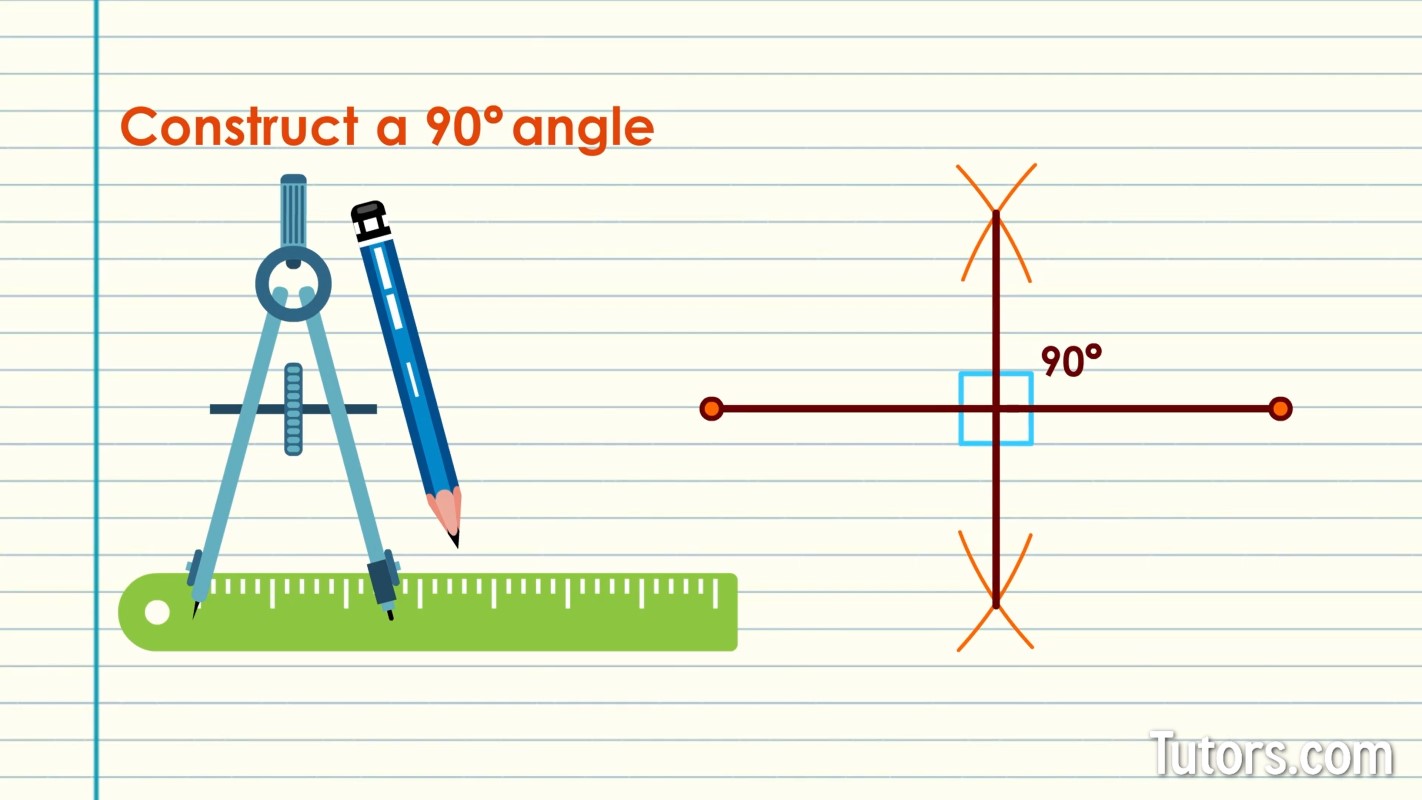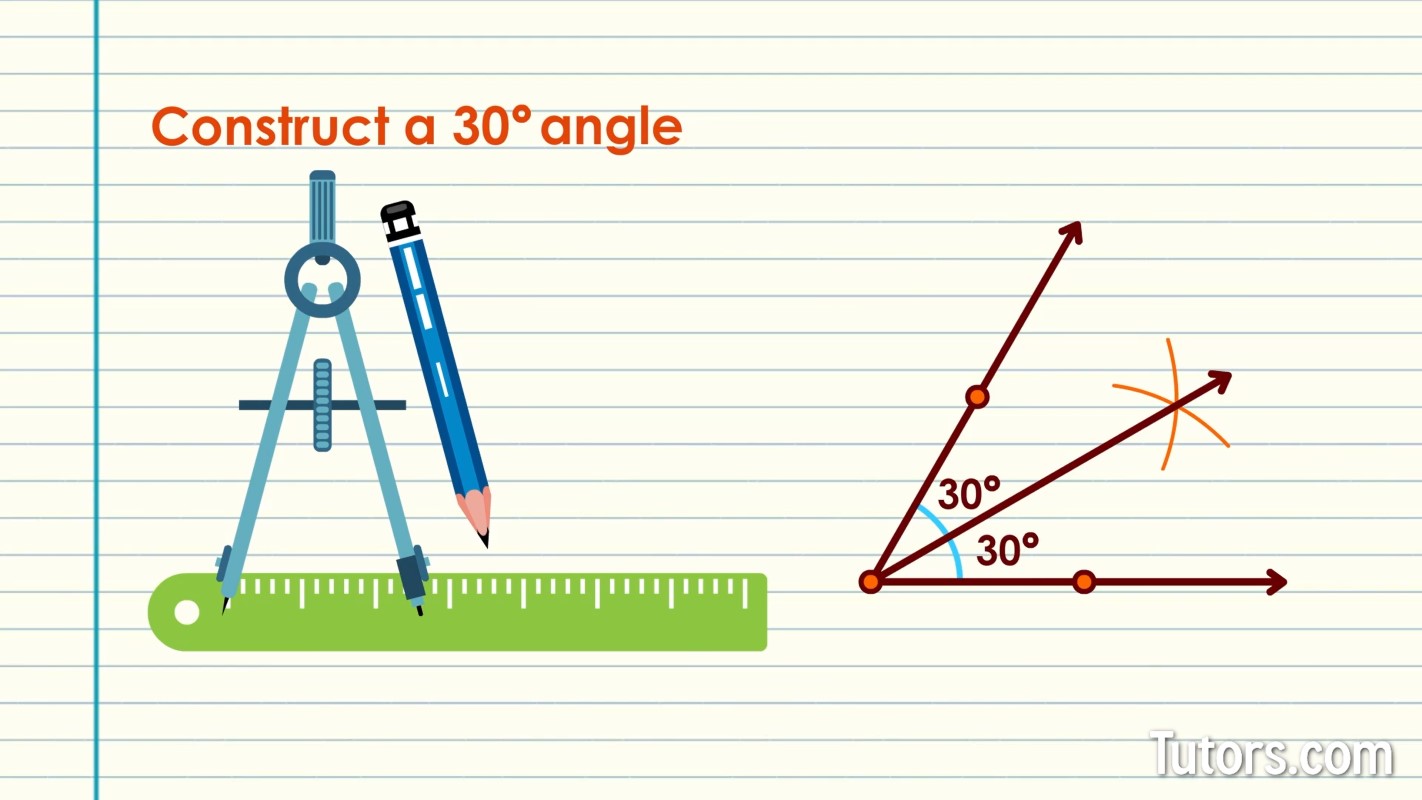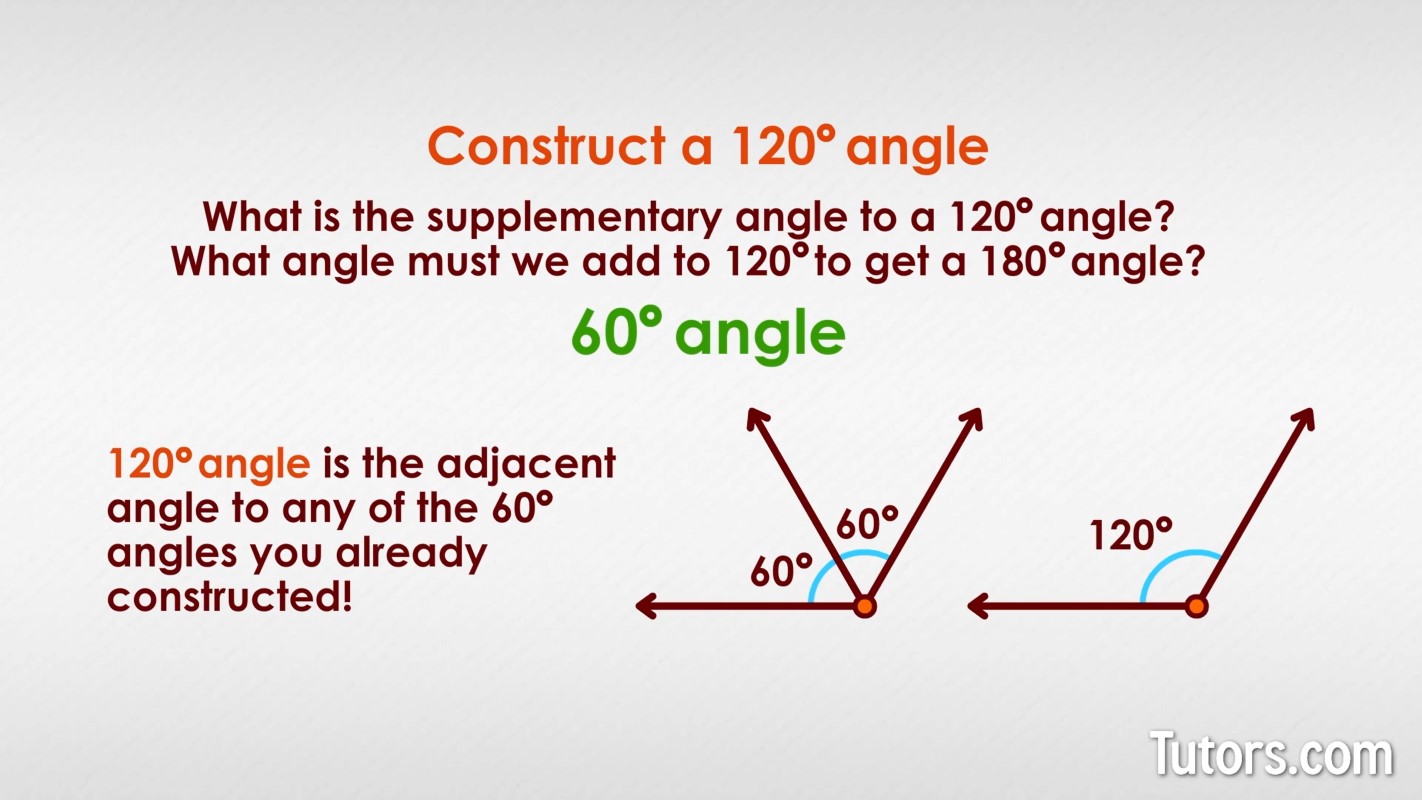How to Construct 30°, 60°, 90° and 120° Angles
Construction of angles
In geometry, everything neatly fits together. Knowing how to bisect a line segment means we know how to make a 90° angle. Knowing an equilateral triangle has three 60° angles makes an easy job of constructing a 60° angle with only a compass, a pencil, a straightedge, and some paper.
How to construct a 90 degree angle
On the paper, draw a line segment longer than the ray of a the 90° angle you need.
Locate two points on the line segment at either end.
Open the drawing compass to extend a bit beyond half the distance of the line segment (do this visually; no need for numbers).
Swing an arc above and below the line segment.
Without changing the compass, relocate it to the other endpoint.
Swing another arc above and below the line segment. The two arcs should cross above and below the line segment.
Connecting the arc intersection points with the straightedge will produce a neat, sure 90° angle, with your transversal and the original line meeting at four right angles!

How to construct a 60 degree angle
60° forms interior angles of equilateral triangles. It is exactly of a circle. Half of it plus itself forms a right angle. You could go on and on.
Steps of construction of a 60 degree angle using a compass
Making a 60° angle begins by remembering that equilateral triangle.
Construct a line segment with a straightedge. Label its endpoints. In our drawing, we will call them Points O and G.
Place the drawing compass needle on Point O and adjust it to meet Point G.
Swing an arc upward from Point G high above the line segment.
Without adjusting the compass, relocate the needle to Point G.
Swing an arc upwards, so it crosses the first arc.
Use the straightedge to construct a line segment from Point O up to the point of intersection of the two arcs.
Label that line segment's new endpoint Point D.
The angle created from Points D to O to G, by striking three congruent lengths, is 60°. If you wanted, you could connect Points D and G and form the equilateral triangle. Hey, DOG, you did it!

How to construct a 30 degree angle
A 30° angle is half of a 60° angle. So, to draw a 30° angle, construct a 60° angle and then bisect it.
First, follow the steps above to construct your 60° angle.
Bisect the 60° angle with your drawing compass, like this:
Without changing the compass, relocate the needle arm to one of the points on the rays. Swing an arc on the inside of the angle.
Without changing the compass, relocate the needle arm to the other ray's point. Swing an arc on the inside of the angle.
Use the straightedge to connect the intersection of the two arcs with the vertex of the 60° angle. That line segment is an angle bisector, yielding two 30° angles.

How to construct a 120 degree angle using a compass
Remember how we said everything in geometry fits together? What is the supplementary angle to an angle of 120°? In other words, what angle must we add to 120° to get 180°?
Did you say 60°? Sure, a 120° angle is the adjacent angle to any of the 60° angles you already constructed!
To construct your 120° angle, construct a 60° angle and then extend one of its sides far past the vertex.

That angle beyond the 60° angle is your 120° angle.
None of your constructions required numbers or measurement. Euclid would be proud of you!